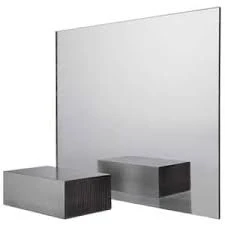

The Benefits of Single Glazed Low-E Glass
In a world increasingly focused on energy efficiency and environmental sustainability, the materials we choose for our buildings and homes play a crucial role. One such material that has gained significant attention is single glazed low-emissivity (low-E) glass. Understanding what single glazed low-E glass is and its benefits can help consumers and builders make informed decisions.
Single glazed low-E glass consists of a single sheet of glass that is coated with a thin layer of metallic oxide. This invisible coating reflects a portion of the sun's infrared energy while allowing visible light to pass through. Unlike traditional single glazed glass, which can lose a significant amount of heat, low-E glass provides a more effective barrier against thermal energy.
The Benefits of Single Glazed Low-E Glass
In addition to energy savings, single glazed low-E glass can improve indoor comfort. Traditional single glazed windows may result in cold drafts or hot spots, making indoor spaces uncomfortable. Low-E glass helps maintain a consistent indoor temperature by reducing temperature fluctuations and creating a more stable environment. This can lead to a more pleasant living or working space for occupants.

Another advantage of low-E glass is its UV protection. The metallic oxide coating not only aids in thermal regulation but also blocks a significant portion of harmful ultraviolet (UV) rays from entering the building. UV rays can cause fading in furniture, carpets, and artwork, leading to costly replacements over time. By choosing single glazed low-E glass, property owners can protect their interiors from sun damage, prolonging the lifespan of their furnishings and reducing replacement costs.
Moreover, single glazed low-E glass does not compromise on natural light. The transparent nature of the glass allows ample daylight to enter interior spaces, promoting a bright and welcoming atmosphere. This is especially beneficial in regions with shorter daylight hours during certain seasons, as it can reduce the need for artificial lighting and further contribute to energy savings.
It is also worth mentioning that single glazed low-E glass is a lightweight option compared to double or triple glazed alternatives. This makes it easier to handle and install, reducing labor costs and installation time. For small-scale projects or renovations, single glazed low-E glass can be a practical and cost-effective choice.
However, it is essential to consider climatic conditions when choosing glass types. In regions with extreme temperature variations, double or triple glazing may still be recommended. Nonetheless, for moderate climates where energy efficiency and aesthetic appeal are priorities, single glazed low-E glass is an excellent option.
In conclusion, single glazed low-E glass presents a compelling choice for those seeking to enhance energy efficiency, comfort, and UV protection in their buildings. Its combination of performance and practicality makes it an attractive solution for home and business owners alike. As we continue to seek out sustainable building materials, single glazed low-E glass stands out as a forward-thinking option that meets the needs of today’s environmentally conscious consumers.